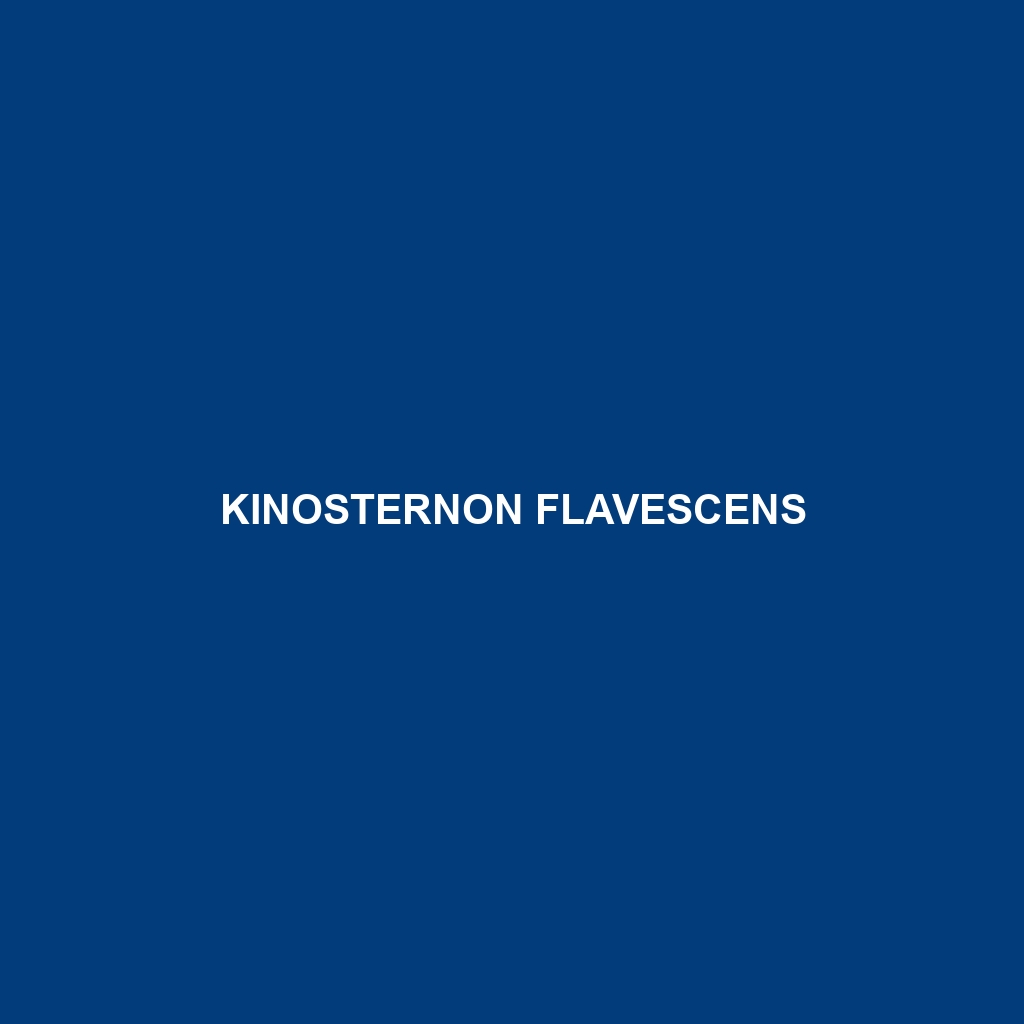Common Name
Kinosternon flavescens
Scientific Name
Kinosternon flavescens
Habitat
Kinosternon flavescens, commonly known as the Yellow Mud Turtle, is primarily found in the central United States, particularly in regions like the Great Plains. This species typically inhabits freshwater environments, including ponds, wetlands, and slow-moving streams. They thrive in areas characterized by temperate climates and are often seen basking on logs or banks in these environments. Additionally, they can be found in habitats that feature a mix of grassy areas and shallow water, which provides the necessary cover and food sources for their survival.
Physical Characteristics
The Yellow Mud Turtle showcases distinctive physical traits that set it apart from other turtle species. Adults typically reach a size of 4 to 7 inches in carapace length. The shell is generally low and smooth, with a dark brown or olive background featuring yellow streaks and spots. Notably, Kinosternon flavescens possesses a unique pair of lateral ridges running down the carapace, which adds to its recognizable appearance. Their skin is predominantly gray to brown, often with a yellowish tint on the undersides. This vibrant coloration serves as an excellent camouflage against the muddy bottoms of their aquatic habitats.
Behavior
Kinosternon flavescens exhibits fascinating behaviors, particularly in its foraging and mating rituals. Primarily nocturnal, these turtles tend to be more active during the cooler temperatures of the night, foraging for food or basking on warm surfaces. Social interactions can be observed during the breeding season, where male Yellow Mud Turtles exhibit courtship behaviors including head bobbing and gentle nipping to attract females. They are known to hibernate during the winter months, burrowing into the mud at the bottom of ponds to escape the cold.
Diet
As omnivores, Kinosternon flavescens displays a diverse diet consisting of aquatic plants, insects, small fish, and crustaceans. Their feeding patterns are often opportunistic; they forage along the bottom of their habitats, scavenging for edible materials. This adaptability in diet allows them to thrive in various environments. The consumption of plant matter contributes to their nutritional needs while the predation on smaller aquatic animals aids in maintaining the balance within their ecosystem.
Reproduction
The reproductive cycle of Kinosternon flavescens typically begins in the spring when males become highly aggressive in establishing mating territories. Mating usually occurs in shallow waters, with the gestation period for eggs lasting about 80 to 90 days. Females lay clutches of 3 to 10 eggs in sandy or soft soil, usually near their aquatic habitat. After hatching, the young turtles are independent and receive no parental care. This reproductive strategy helps increase the chances of survival in a predator-rich environment.
Conservation Status
Currently, Kinosternon flavescens is listed as Least Concern on the IUCN Red List. Despite this, certain populations face challenges due to habitat loss and degradation, primarily from urban development and agricultural expansion. Conservation efforts are focused on habitat protection and restoration, ensuring that the aquatic environments upon which they depend remain healthy and viable.
Interesting Facts
One of the unique adaptations of Kinosternon flavescens is its ability to survive extended periods of drought. When water sources dry up, they can burrow into the mud and enter a state of estivation, significantly slowing their metabolic rate until conditions improve. This remarkable adaptation allows them to endure harsh environmental changes.
Role in Ecosystem
Kinosternon flavescens plays a critical role in its ecosystem as both predator and prey. As an omnivore, it helps control insect populations and contributes to the health of aquatic vegetation by grazing on plants. Furthermore, they serve as a food source for larger predators, which helps maintain a balanced food web. By participating in nutrient cycling within their habitats, they contribute to the overall health of freshwater ecosystems.
This comprehensive description covers the relevant aspects of the species in an SEO-optimized format, utilizing keywords and phrases while maintaining an informative tone for readers.
